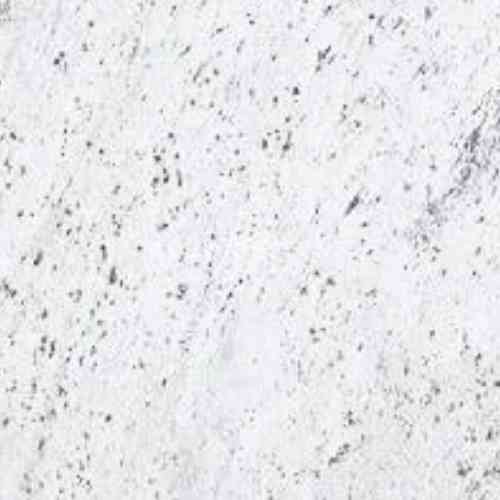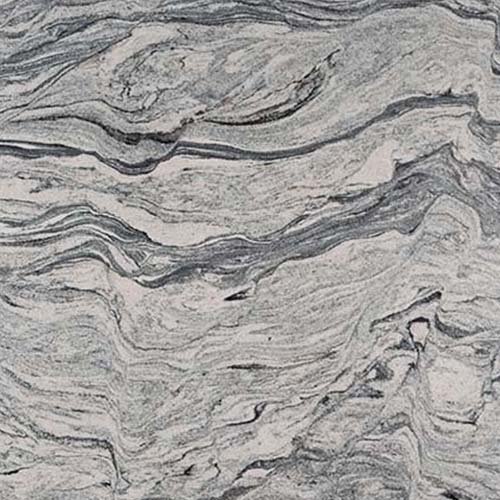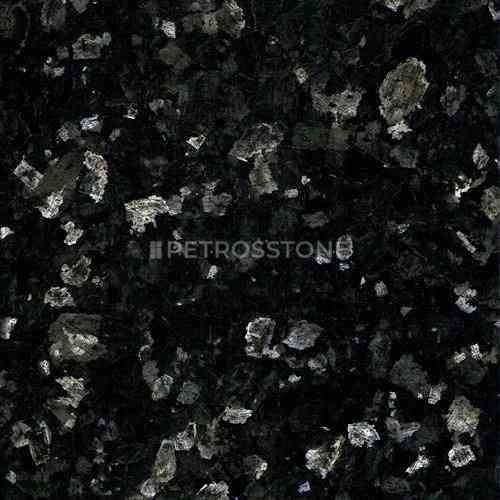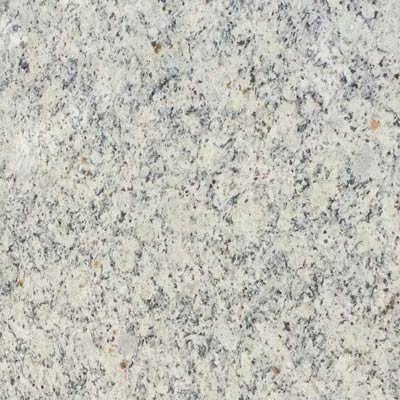
In this article we will look at the best natural stone for coping – travertine, marble, sandstone, granite or marble? We will show you an easy cost calculation technique and help you choose the right coping stone for your pool.
What gives a swimming pool or garden wall its neat, polished appearance? The coping is usually a hidden architectural component that a lot of people do not understand is part of the secret. The coping is a lot more than simply ornamental trim; it’s a crucial element that safeguards structures, improves safety and also offers a fashionable visible finish.
You may be a homeowner planning a new patio, a contractor shopping materials, or just curious about design – this guide covers coping from its purpose to the durable options in natural stone.
- Why Coping Matters
- Average Costs of Natural Stone Coping
- Long-term Cost Considerations
- Natural Stone Coping
- Other Types of Coping
- Best Natural Stone for Coping
- How to Choose the Right Coping Stone?
- Pros and Cons of Natural Stone Coping
- Uses of Coping in Different Areas
- Installation Guide for Natural Stone Coping
- Maintenance and Longevity
- Design Ideas and Customization
- Conclusion
- Frequently Asked Questions (FAQs)
Why Coping Matters
Although it may look like a small detail, the impact of coping is enormous. This is precisely why coping should not be considered an afterthought:
- Water Protection: Its major application is Water Protection. The primary defense against rain, ice, and dampness is coping. They keep it out of the center of a wall or behind a pool, where it can cause mold growth, freeze-thaw damage, and material degradation problems.
- Durability: Coping considerably extends the lifetime of the structure. By safeguarding it from water, it decreases the need for maintenance as well as repairs in the future. It is a little investment that preserves a much bigger one.
- Aesthetics: Function aside, coping gives a clean, thought-out finish. It defines a wall, supports a swimming pool and ties the whole design together. A project could go from ordinary to extraordinary by simply picking out the right material, color, and profile.
- Safety:Coping is an important safety element in swimming pool settings. It makes it simple for swimmers to maneuver around on a steady, non-slip edge. For additional comfort, particularly with round profiles such as the bullnose, there are special profiles that are made to prevent scrapes and to provide superior support.
Average Costs of Natural Stone Coping

Generally speaking, plan to spend around USD 30 to USD 50 per linear foot for natural stone coping. It may also cost more to make use of top-quality materials such as marble.
Pre-cast concrete coping costs between ten and twenty-five dollars a square foot, for illustration. Natural stones are usually more costly due to the labor-intensive processes of cutting, quarrying, and finishing.
How to Calculate Coping Costs
Here’s a method for calculating your total coping costs:
Formula:
Total cost = per foot (in linear feet) x (Material Cost per foot + Labor Cost per foot)
An example of Calculation
Let us imagine your pool has an 80-foot perimeter, and you are utilizing limestone priced at USD 35 per foot, with labor estimated at USD 15 per foot:
Total cost: 80 feet x (USD 35 + USD 15).
The total cost for 80 feet equates to 4,000 USD.
To know the exact cost for your preferred natural stone coping, chat with us or check out this free online pool coping cost calculator
Long-term Cost Considerations
Natural stone comes with a greater initial price, but over time its worth is a lot higher.
- Maintenance: Only natural stone coping requires periodic cleaning and sealing every 1-3 years.
- Durability: Quality stone will last for decades – often outliving other materials – and will save you money on replacement costs.
- Repairs: Minor chips or cracks can be fixed quickly and without much cost, causing large problems.
Natural Stone Coping
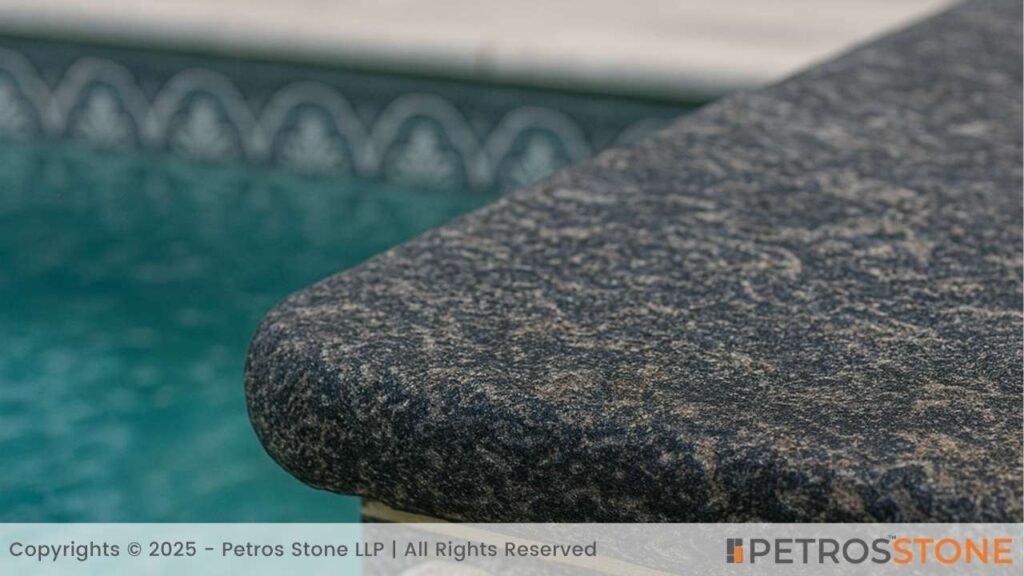
The gold standard for coping is natural stone, and it provides a mix of rugged performance and timeless beauty that few other materials are able to equal.
What is Natural Stone Coping?
Natural stone coping is formed from big blocks taken directly from the earth. From these blocks, slabs are cut to create profiles. It’s a natural product – every piece is different – veined, colored, and mineralized differently. That means a unique finish for your project.
Key Benefits of Natural Stone Coping
- The natural stone’s rich colors, textures, and patterns give it a timeless, organic look that can’t be beat.
- Stone is very durable; it can stand up to weather, impact, and heavy use.
- Many stones don’t slip naturally, such as tumbled, flamed, or honed.
- Sealing natural stone makes it easy to clean and care for.
- Stone is a natural product that is good for building when it comes from local quarries.
Other Types of Coping
Coping is categorized according to the material utilized as well as the shape or profile. Understanding these options can help you choose the best fit for your project’s style as well as functional needs.
Limitations of Natural Stone Coping
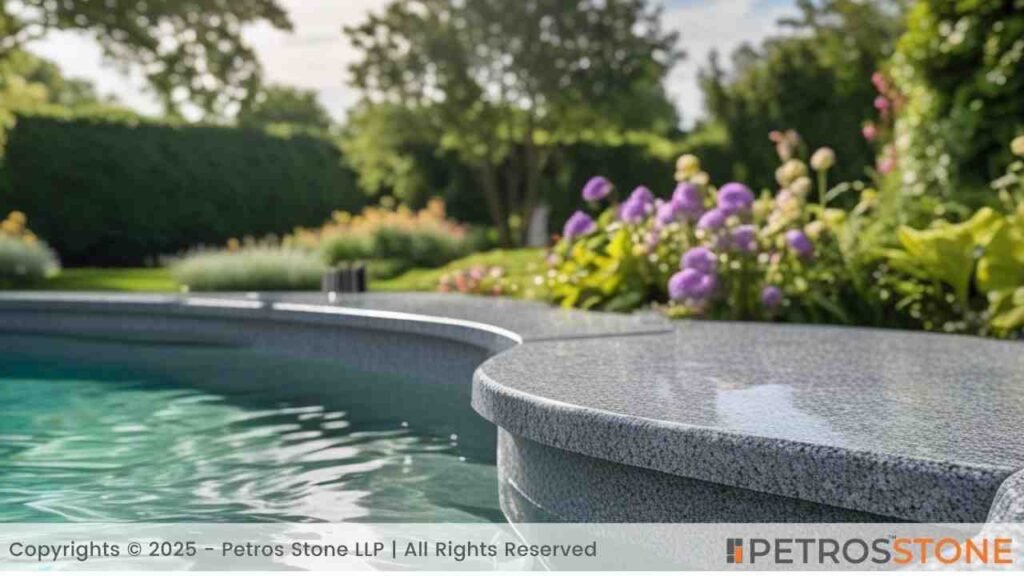
The limitations of natural stone coping include issues such as staining, porosity, and other industry-related concerns.
- Porosity: Einige stones (like some limestones and sandstones) are porous – they absorb water. This makes sealing essential to avoid staining or damage by freeze-thaw cycles.
- Staining: Lighter colored stones may show staining from leaves, dirt, or spills unless they are sealed.
- Weight: Stone is heavy. Your structure (wall or pool beam) has to be engineered to support this weight.
By Material
1. Natural Stone
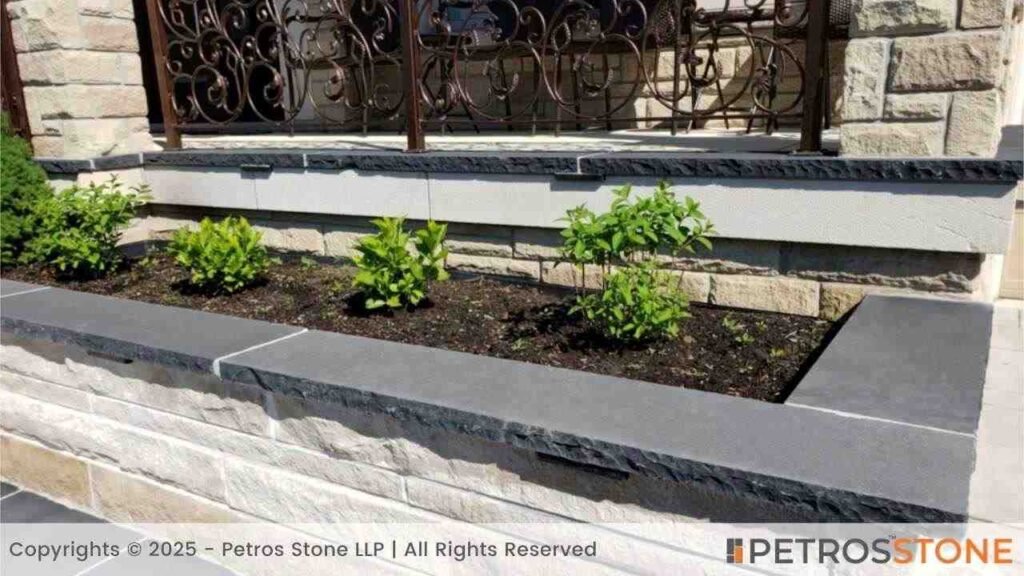
This is the premium standard (limestone, granite, sandstone, travertine, slate, quartzite).
2. Concrete
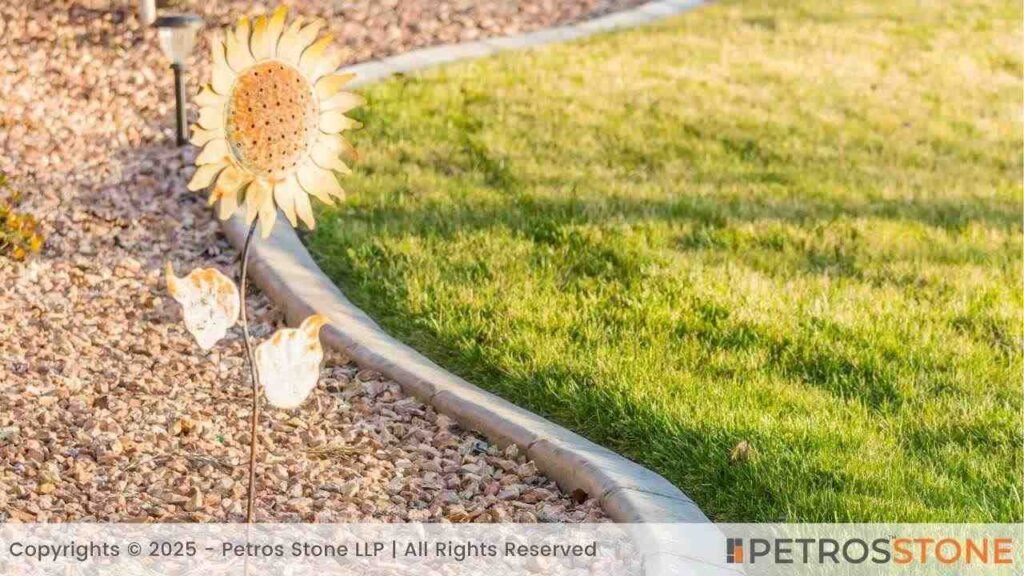
Versatile and cost-effective; Can be precast or poured in place, stamped, or colored to resemble stone.
3. Brick
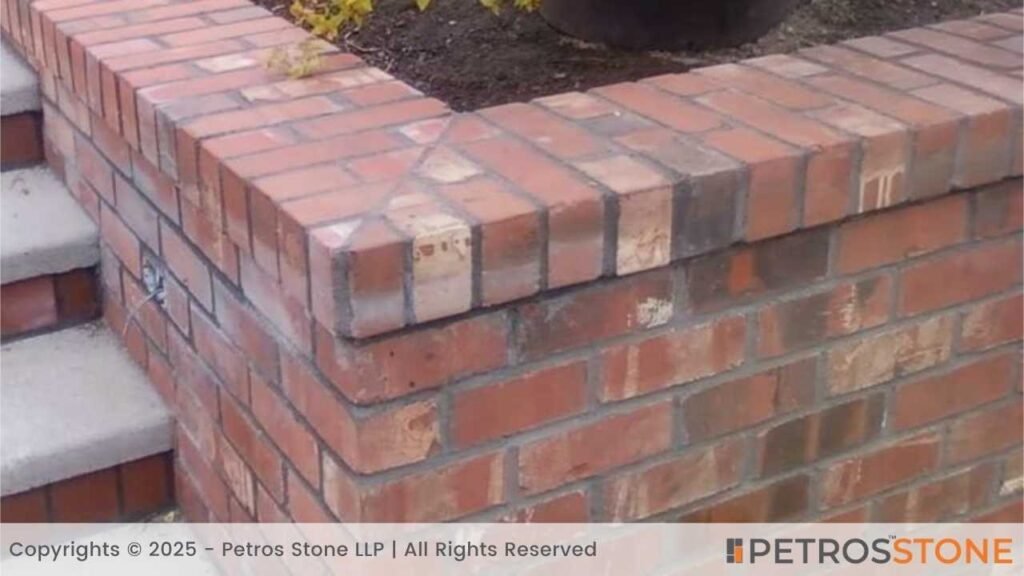
It is traditional and classic and looks great with brick homes and patios.
4. Metal
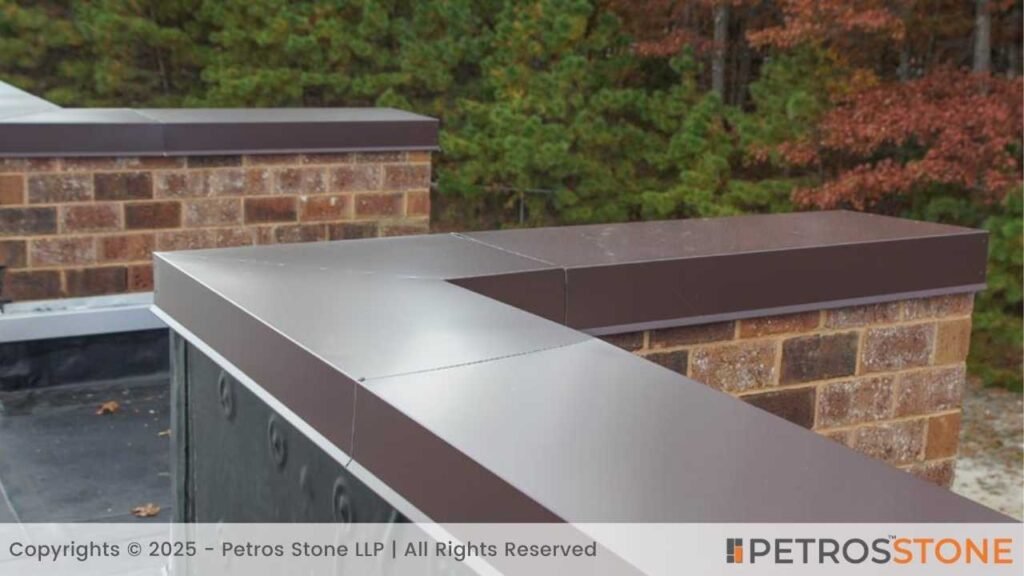
Aluminum, steel, or copper coping is used in contemporary architecture.
5. Clay Tile
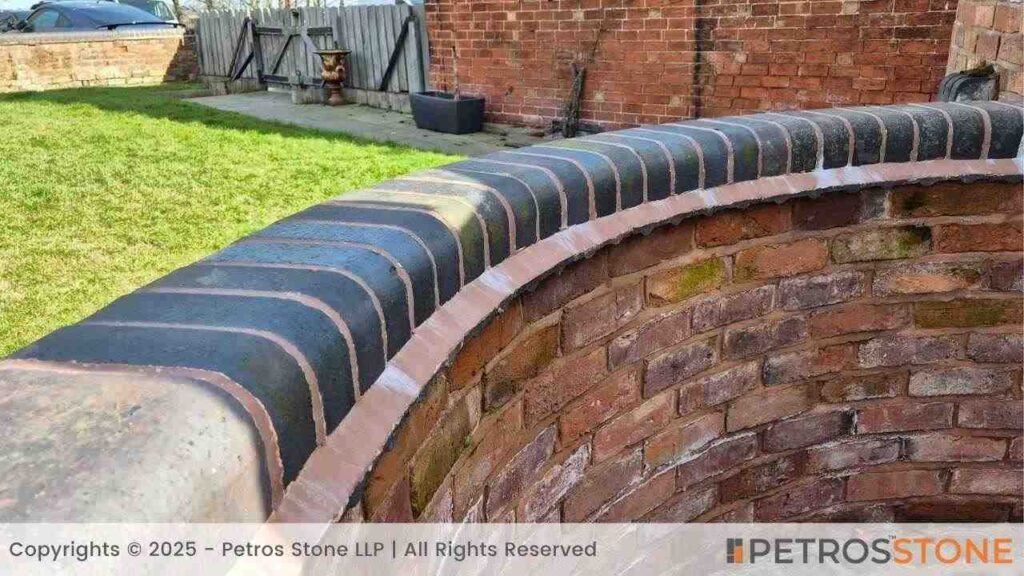
Common on most Mediterranean or Spanish-style dresses, these are bright and waterproof.
6. Composite and PVC Alternatives
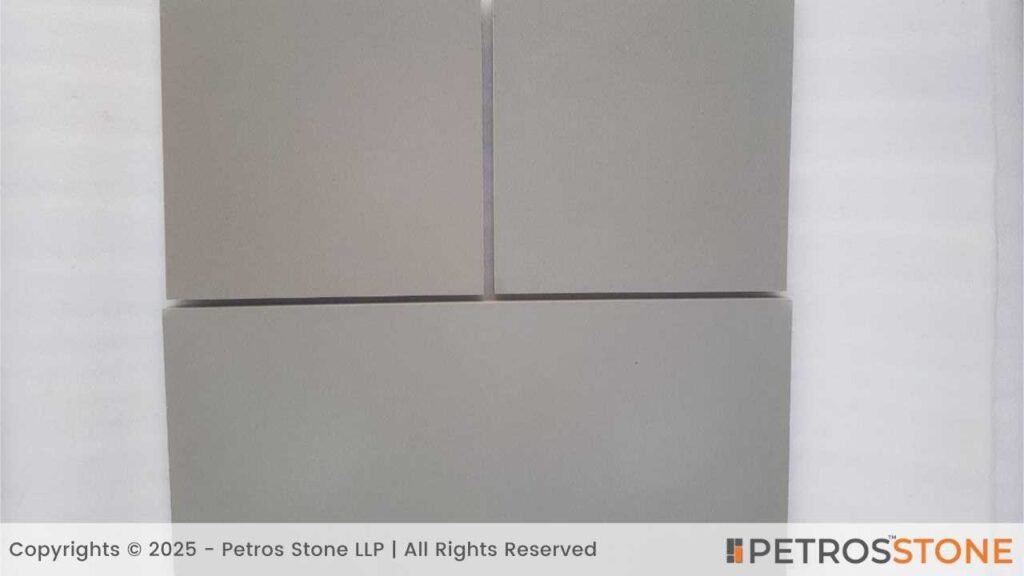
Lightweight, low-maintenance synthetic options that look like natural materials.
7. Recycled or Sustainable Materials
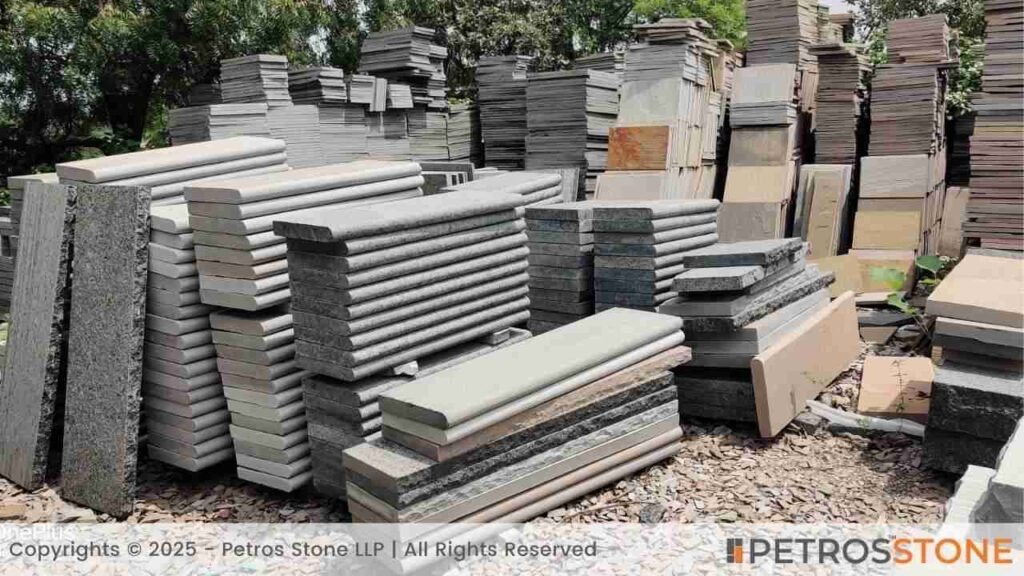
For green building projects, eco-friendly options made from recycled content are preferred.
By Profile and Shape
The appearance as well as the feel of your coping are influenced by the edge profile.
1. Bullnose
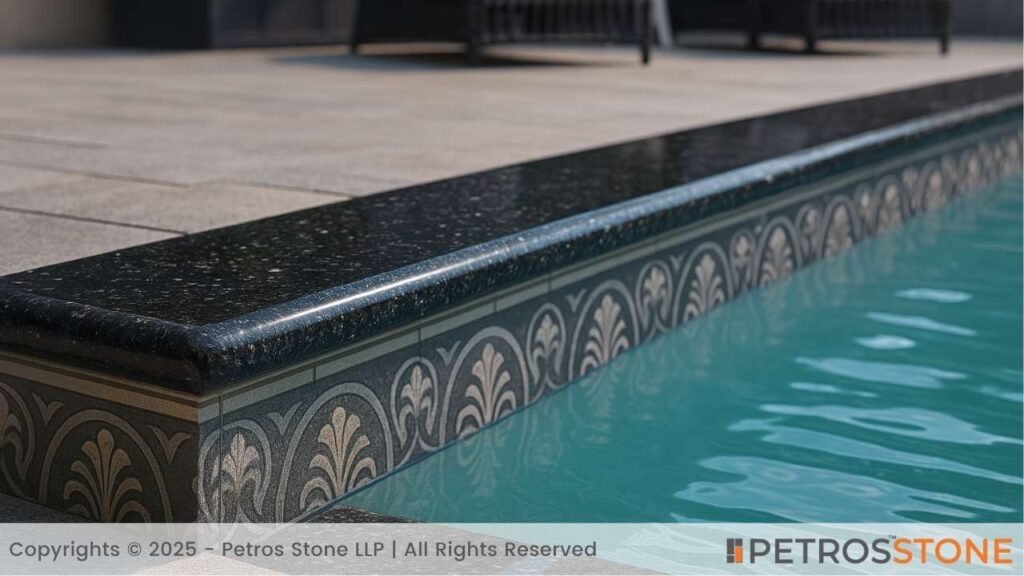
The conventional bullnose features a round edge. Its popularity as a swimming pool seat has resulted in it being the most popular choice, as it offers extra support while also being very easy to grab for safety.
2. Flat Mount
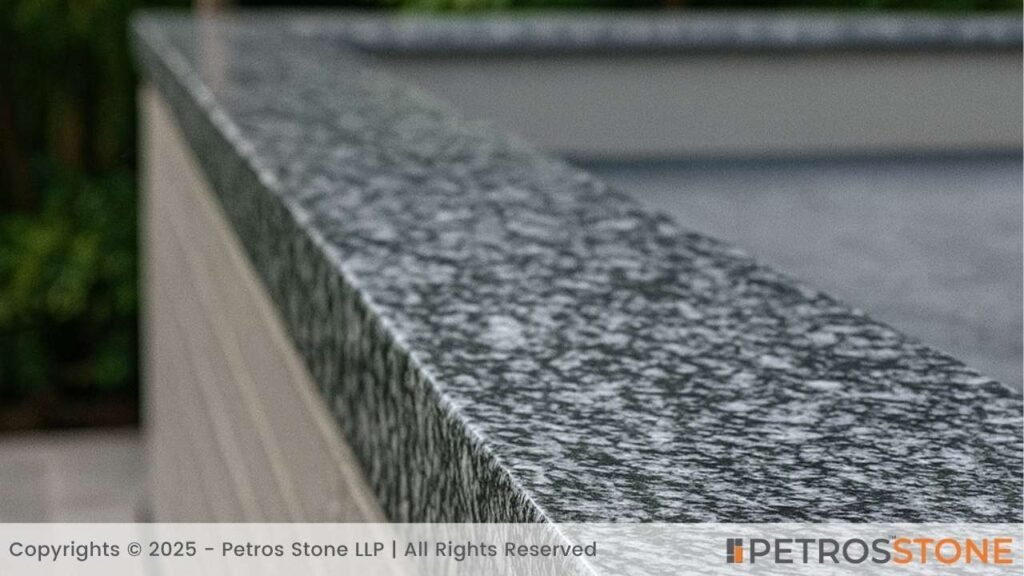
A flat, square edge that gives the look of A fresh, minimalistic, and contemporary look.
3. Cantilever
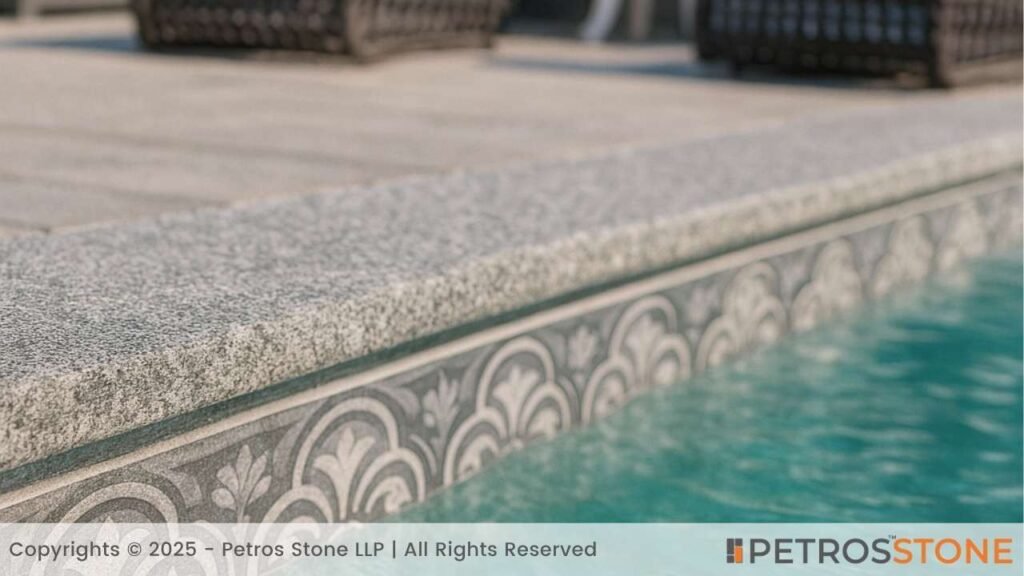
Copings that extend or “cantilever” over the edge of the wall or pool produce a seamless, floaty look.
4. Drop Face
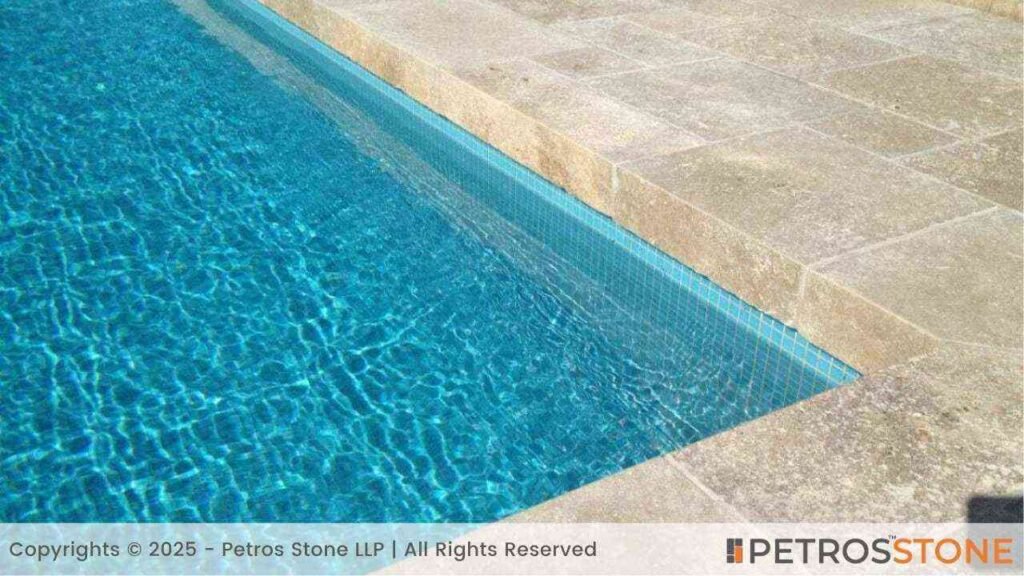
A profile in which the exterior edge features a heavy, rich face that drops down vertically, producing a daring, considerable appearance. It had been cut out of an enormous stone.
5. Square/Arrised Edge
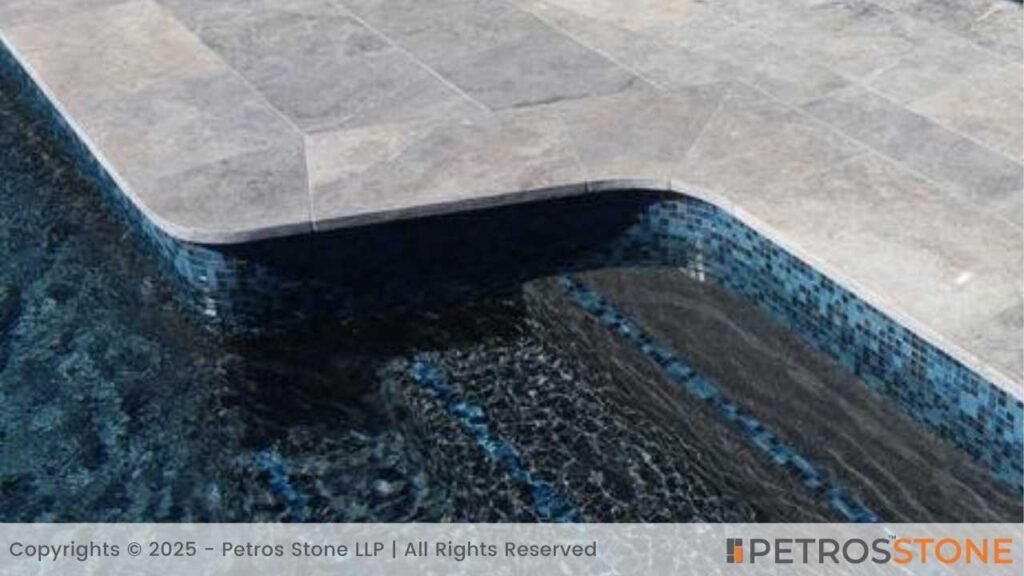
Edges can be either angled or square, featuring a sharp 90-degree edge that creates a distinctly contemporary or geometric style.
6. Chamfered and Beveled Edges
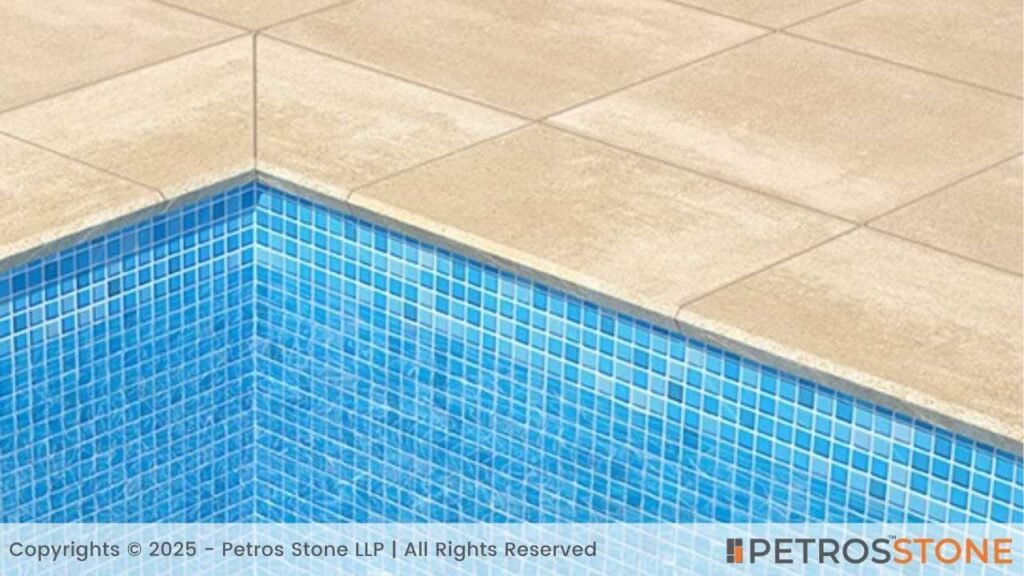
Edges that are chamfered or beveled are cut at an angle to soften the sharp sides of a square profile, creating a transitional appearance suitable for both traditional and contemporary styles.
Best Natural Stone for Coping
The task of selecting the best stone might seem overwhelming with many options. Here are a few of the major contenders.
Top Choices for Natural Stone Coping
1. Limestone

An eternal classic. They say it’s tough, sophisticated and available in consistent colors from buff to gray.
2. Granite
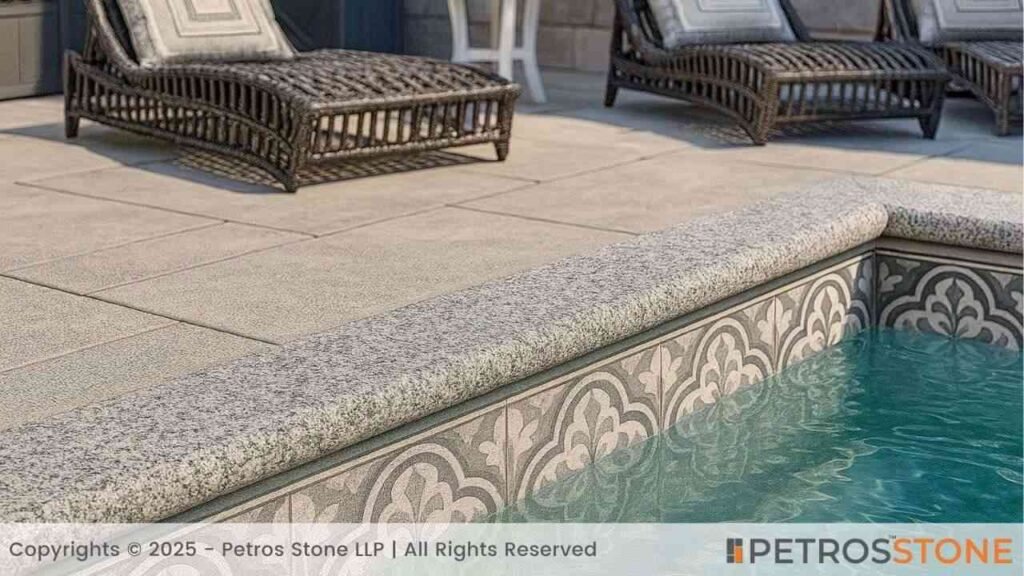
This stone is a powerhouse. It’s very hard, dense, resistant to weather, heat and staining and available in many colors.
3. Sandstone
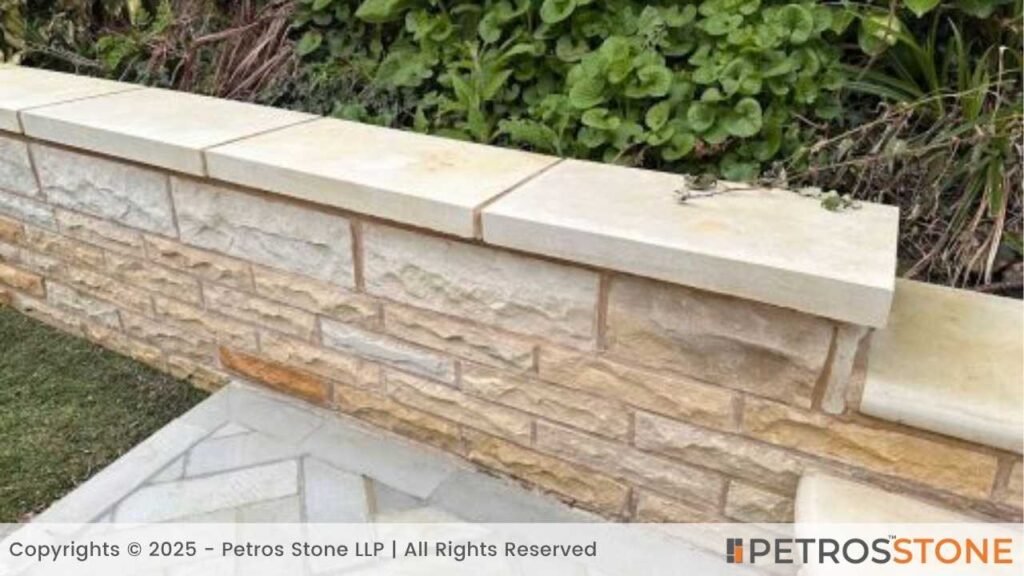
It has warm, rustic, earthy tones. It is naturally slip-resistant and tough.
4. Travertine
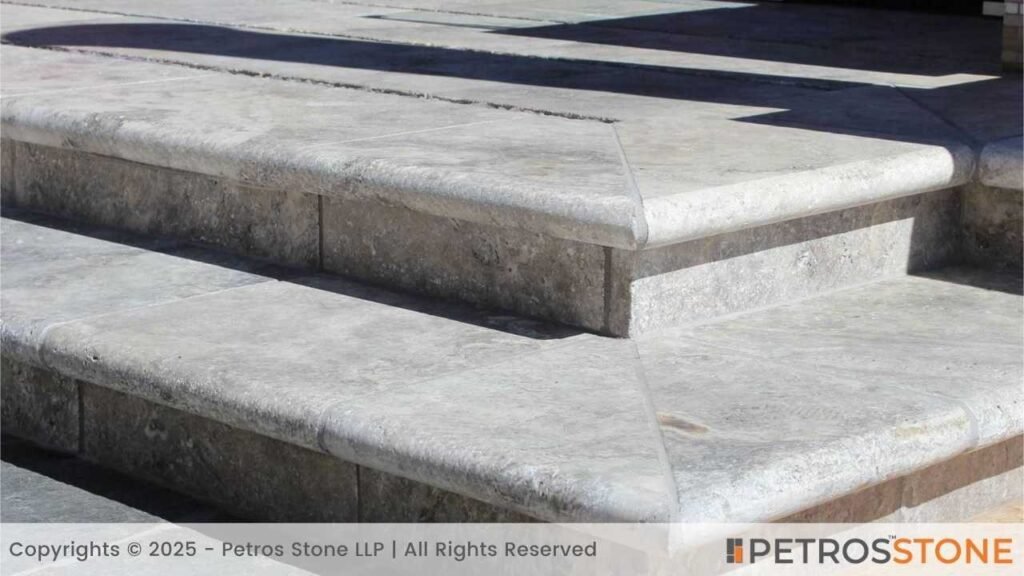
It is a fine, fibrous limestone. It is remarkably cool to the touch and is used for pool coping in sunny climates.
5. Slate and Quartzite
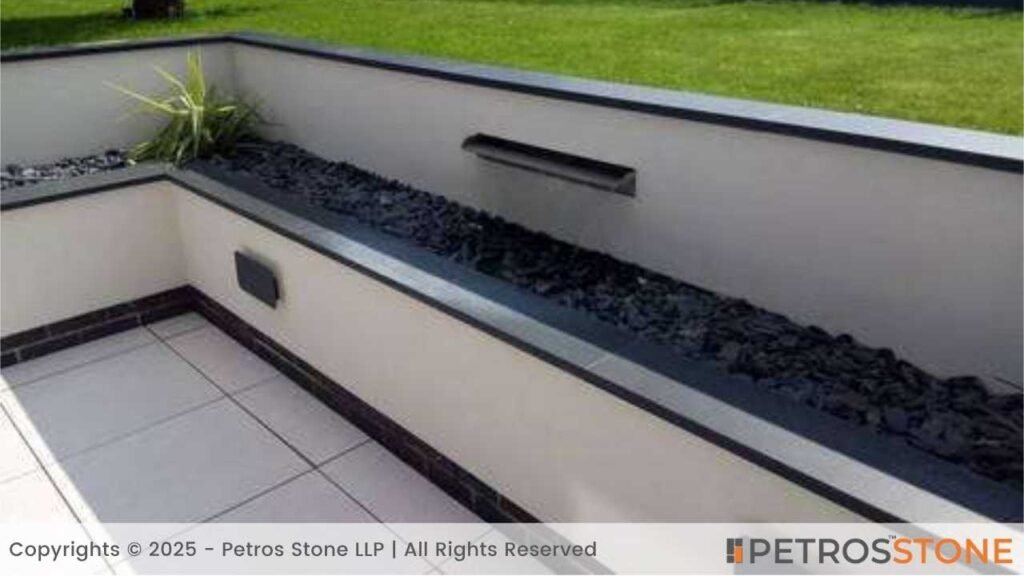
They are layered metamorphic rocks with deep color tones. These are extremely dense and durable.
6. Bluestone
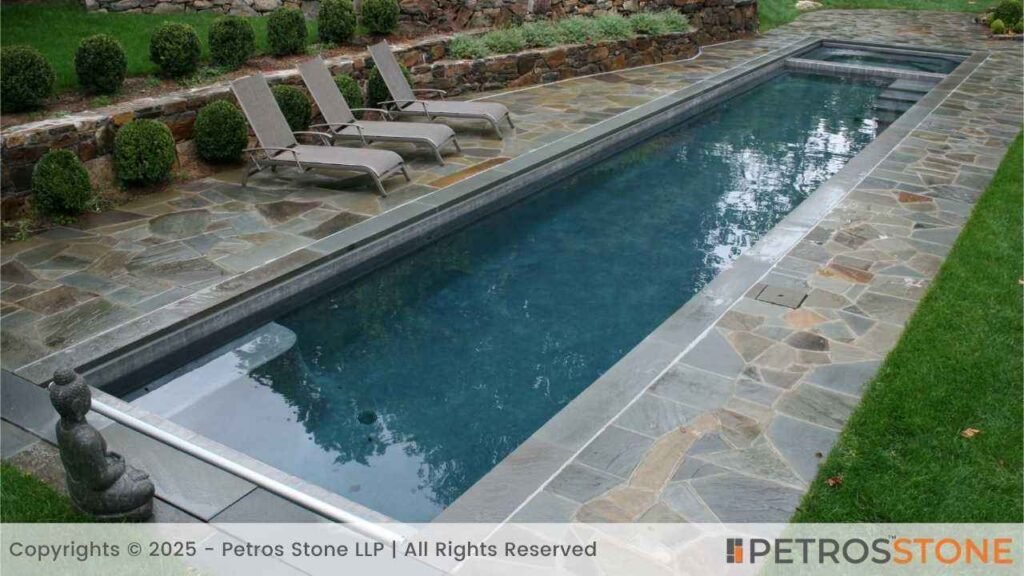
Blue-gray classic American sandstone or limestone with excellent durability and a great non-slip surface.
7. Marble
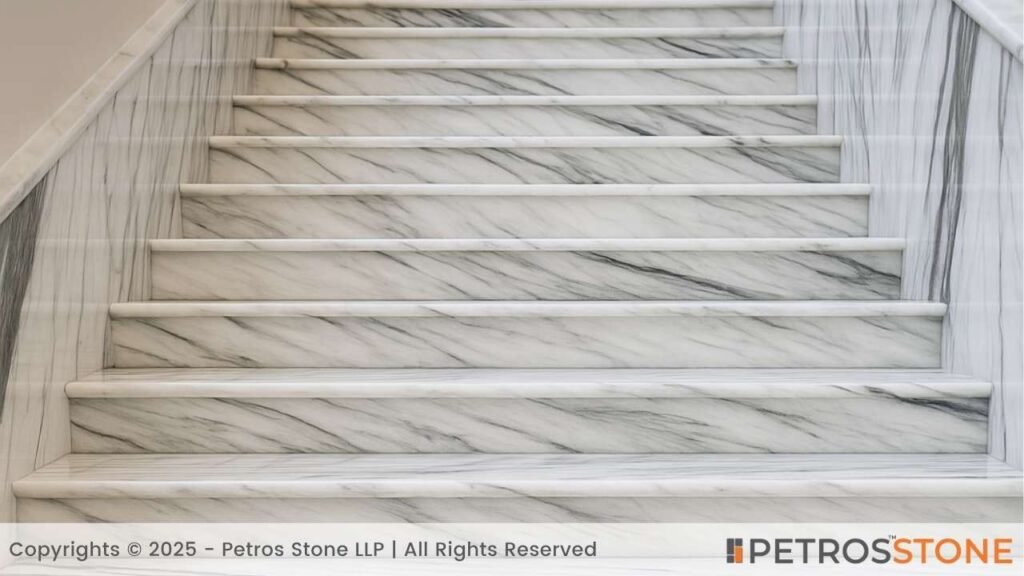
The highest level of luxury is used in fine decoration. This material is less common for exterior coping due to its softness and porosity but has an unmatched elegant look.
8. Onyx
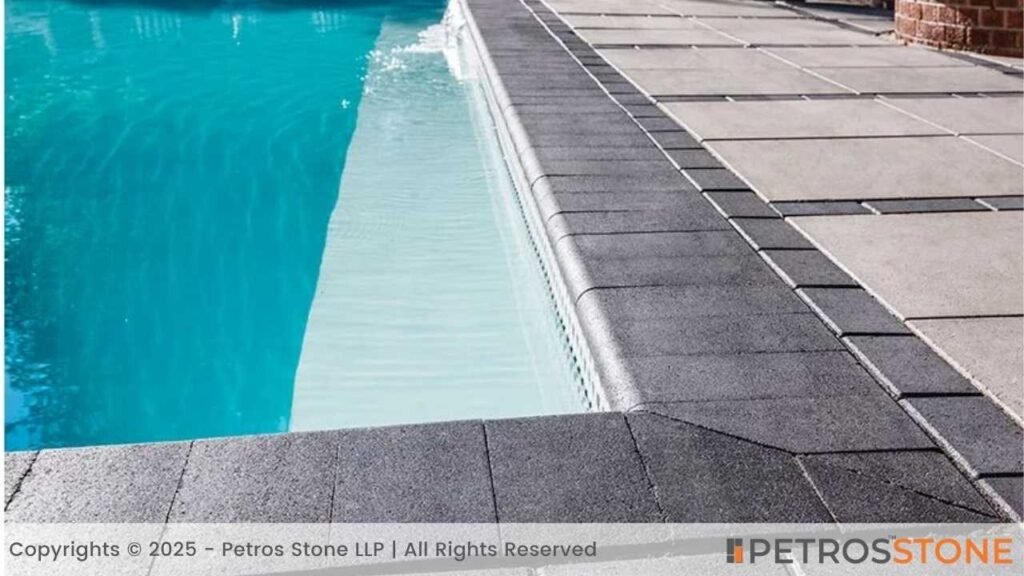
A dramatic, often translucent stone, for very select, high-impact applications, usually with backlighting.
How to Choose the Right Coping Stone?
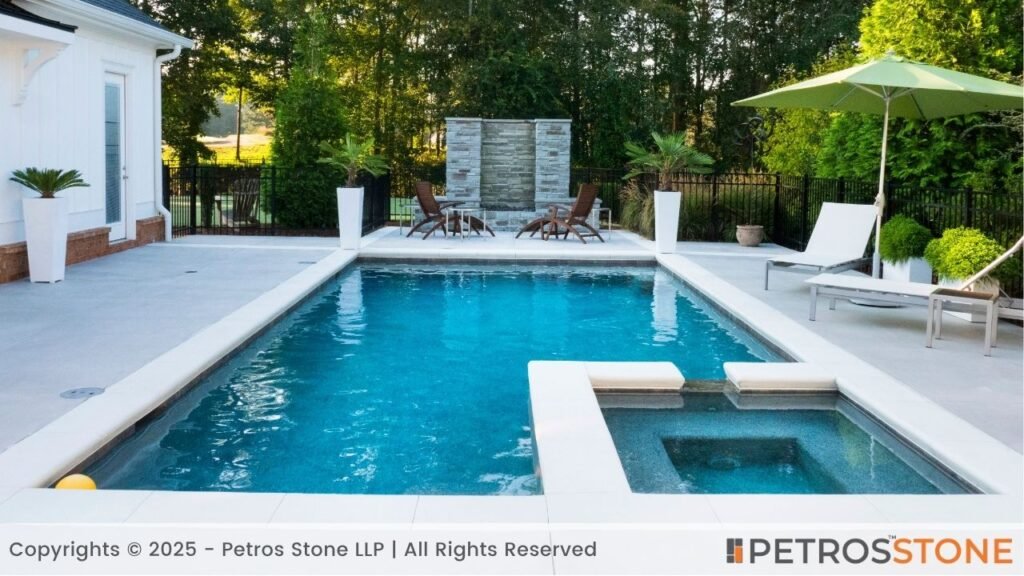
Let’s look at some of the things you should think about when making the best choice.
- Climate: If you live in an area with very hot or cold weather, pick a hard, non-porous stone like quartzite or granite.
- Slip Resistance is Non-Negotiable: For poolcoping or stairs. Find stones that have natural textures or that have a slip-resistant finish, such as flamed, honed or even tumbled. You need to steer clear of polished finishes.
- Design and color: Your coping has to complement your home’s landscape and architecture. Determine whether you would like it to blend together with the background or even stick out.
- Porous vs. Non-Porous: Porous stones such as limestone and travertine may need more regular sealing than dense stones like granite.
- Types of finishes: The finish influences each look and functionality. Honed finishes are sleek but not shiny, Tumbled finishes are weathered and rustic, Brushed finishes are textured, and Flamed finishes are basic and very slip resistant.
Pros and Cons of Natural Stone Coping
| Pros | Cons |
| Each piece is exclusive, timeless, and luxurious, making it a unique treat for our customers. | Higher upfront costs: the initial investment is much more than the man – made materials. |
| Extreme Durability: Withstands wind and traffic, as well as time. | Porosity & Staining: Sealing porous stones is necessary to prevent water damage and stains. |
| Inherent Safety: Many types of natural stone are highly slip resistant. | Heavy Weight: Heavy Weight Installation may necessitate increased structural support. |
| Low Maintenance: only occasional cleaning and sealing are necessary. | Natural Variation: Variation in Pattern and Color might not be great for designs that require uniformity. |
| Eco-Friendly: Made from all- natural and renewable materials. | |
| Increases Property Value: This feature is perceived as a high-end, premium upgrade. |
Uses of Coping in Different Areas
While most associated with pools and walls, coping is a versatile element used across a landscape.
1. Pool Coping

That’s the most common application. Pool coping offers a secure, finished edge that separates the pool building from the neighboring deck. It keeps the pool shell shielded from harm and also offers a protected handhold as swimmers splash out water.
2. Wall Coping
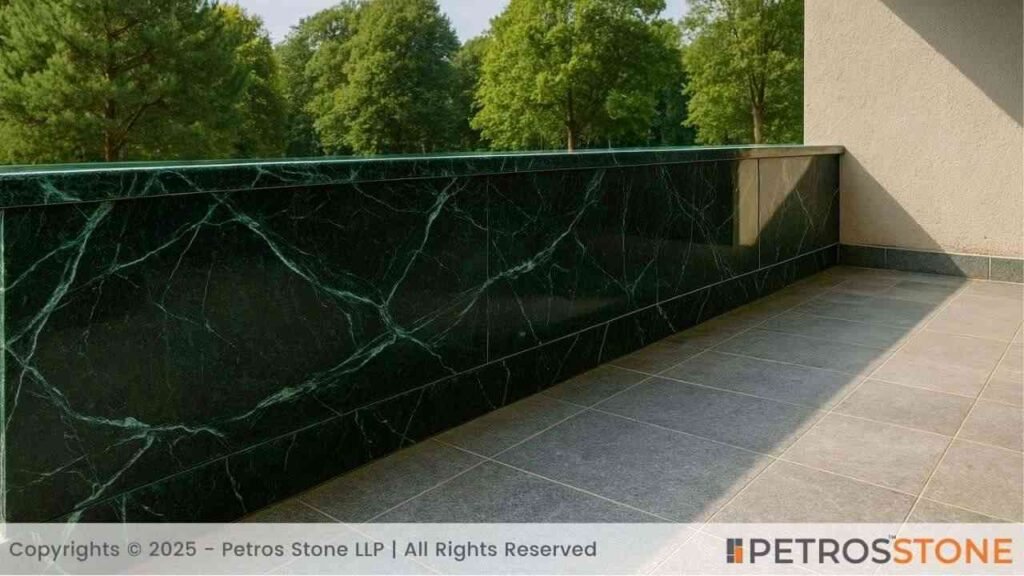
Coping is crucial for protecting walls, retaining building piers, and other structures. It prevents water from reaching the roof of the wall, which is probably the most susceptible place for moisture damage, which might cause bricks as well as blocks to break apart.
3. Other Applications
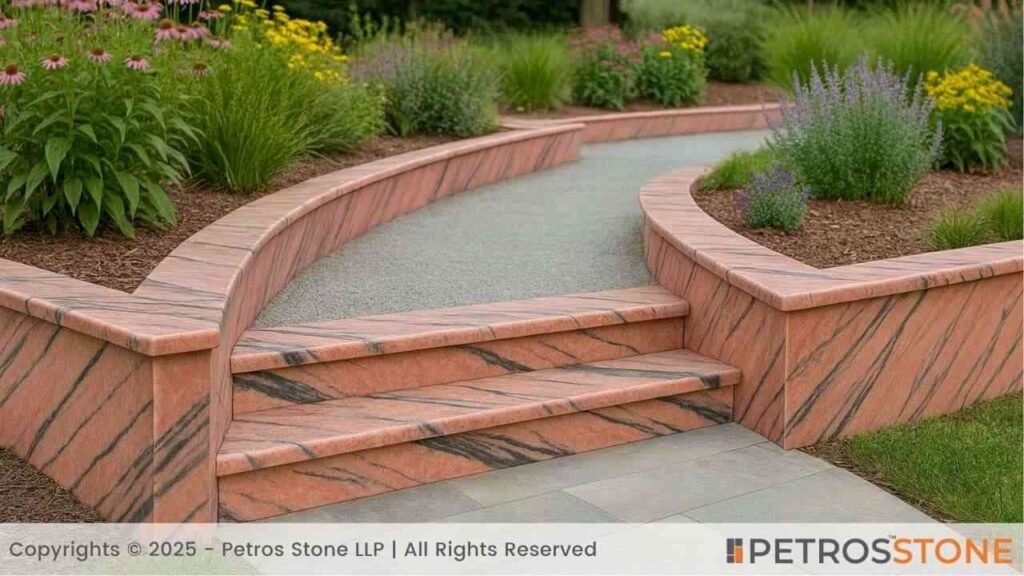
The utilization of coping goes beyond:
- You’ll have an attractive and durable tread for your stairs as well as steps.
- You can incorporate various garden features, including raised planters and seating walls.
- Water features and fountains are crucial for effective water management.
- To achieve a finished look, use pillars and gate posts as part of the design.
Installation Guide for Natural Stone Coping
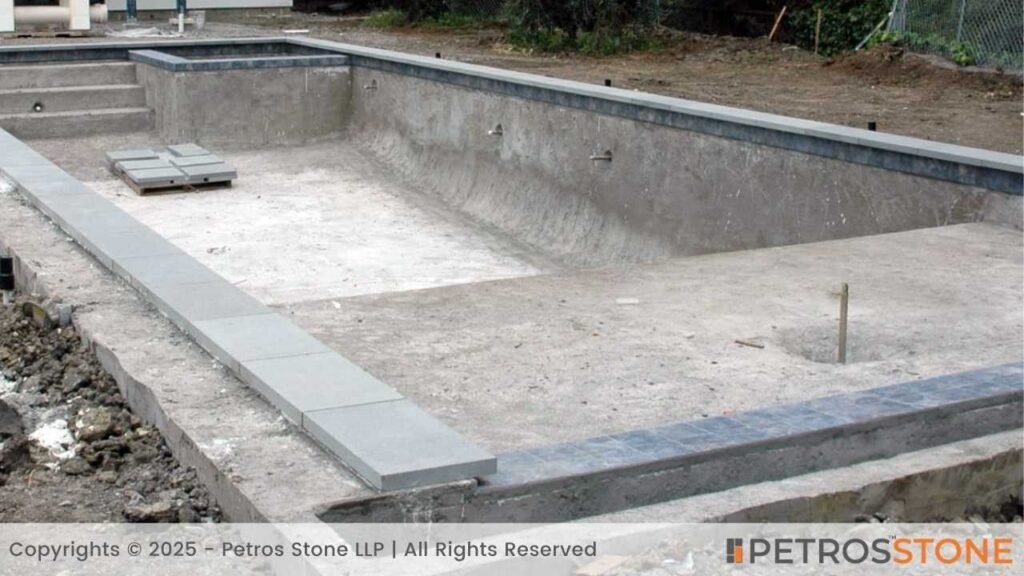
It requires precision and skill to put in natural stone coping. We highly recommend hiring a professional for this installation, as it will yield the best results and ensure the longest lifespan. This guide gives a broad introduction to the topic.
Preparation and Tools Needed
- Level, tape measure, measuring tape and string line.
- Use a mortar blender, a trowel, and a rubber mallet.
- Mortar mix (generally a 4:1 sand-to-cement ratio)
- For even joints, spacers are needed.
- A diamond blade is needed for cutting, which can be used with a grinder.
- It is a top-quality stone sealer and applicator.
Step-by-Step Installation
- Preparing the Surface: Be sure that the top of the wall or pool beam is level, dry, and clean.
- Mortar Mix: Mix together sand as well as cement with some water until it is a thick, peanut butter consistency.
- Set a Guideline: Work with a guideline to make certain that there is a perfectly straight and level installation between the two end pieces.
- Set the Coping down: Apply to the surface a complete bed of mortar. Press the very first stone in position using a rubber mallet and lightly tap it in place. To make sure joints are uniform, utilize spacers.
- Grout the Joints: Fill in the joints between the stones using mortar or grout right after the mortar sets. This gives the joints a finished appearance.
- Clean and Seal: Once the installation is complete, clean the area thoroughly and apply a penetrating sealer to protect the stone.
Common Installation Mistakes to Avoid
- Poor Leveling: Will cause the final product to become uneven and unstable.
- Poor mortar covering: Using a “dotting” mortar instead of a complete bed can lead to hollow and weak areas.
- Not Sealing Your stones: Leaving porous stones open to water damage as well as unavoidable staining is a certain sign that you’re not sealing them.
- No Expansion Joints: For very long runs, it is essential to include Expansion Joints to allow for natural thermal expansion and contraction, which helps avoid cracks.
Maintenance and Longevity
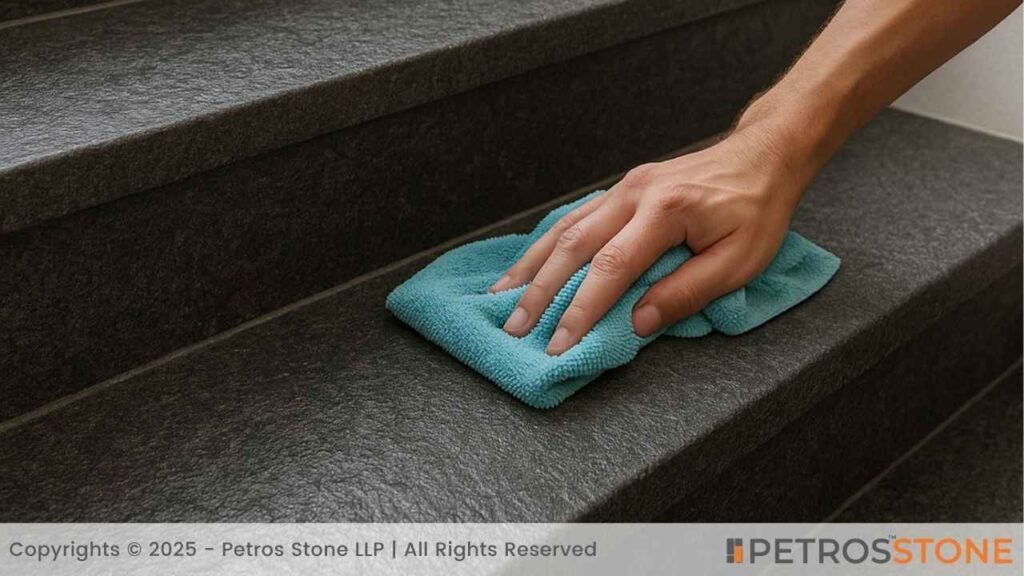
Your natural stone coping is certainly going to look stunning for generations with appropriate care.
Cleaning and Sealing
Work with a gentle brush along with a pH-neutral cleanser to clean your stone coping. Use care when using chemical or acidic cleaners, because these can harm the surface area of the stone. In general, it is best to replace your penetrating sealer every 1-3 years or as directed by the manufacturer, particularly in damp areas or where there’s plenty of foot traffic.
Repair and Replacement
Look for cracks or chips in the coping, and replace them frequently. If you are able to prevent water from entering into your pipes and creating bigger problems, it may be solved early on with color-matched epoxy or grout.
Seasonal Maintenance Tips
- Check for damage coming from freeze-thaw cycles following the winter.
- Thoroughly clean the coping just before starting the pool season, and then check if it needs resealing. Spread a little water on top of it, and if it beads up, that means it is time to reseal it.
Design Ideas and Customization
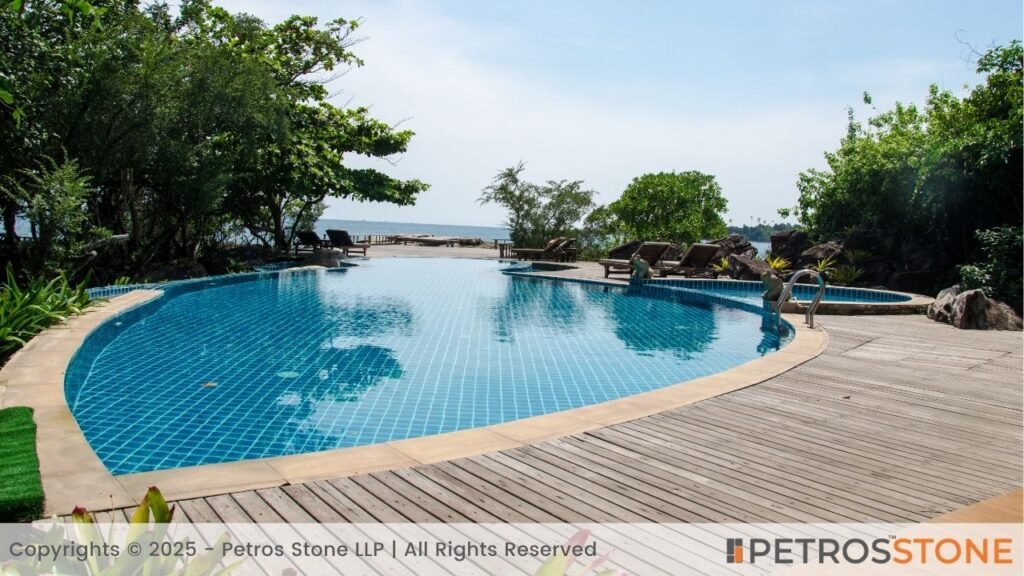
Do not be scared to be creative! Natural stone possesses a limitless design potential, thanks to its versatility.
Color and Finish Options
The palette of colors is vast, from the frothy whites of travertine to the dark blacks of granite. You can get a smooth, matte finish with this finish or even opt for a flamed finish for a more textured appearance.
Patterns and Layouts
Think about laying out your coping in intriguing patterns as opposed to an easy linear run. To create ashlar or random patterns for broad wall caps, you can blend various sizes of stones.
Mixing Materials for Visual Contrast
By combining stone coping with some other materials, you are able to produce a contemporary look that is striking. Picture a pool with a dazzling limestone coping that results in a warm ipe deck. Or contrast the rustic feel of the bluestone fence with a strong, black metal fence.
Conclusion
Even though some particulars of the landscaping or building process might appear minor, coping is really one of the most crucial components for long-range safety, effectiveness as well as visual appeal. It can function as both a barrier and a design statement from pool edges to patio walls. Natural stone coping is unparalleled when it comes to beauty, durability as well as property value.
Selecting the correct stone can make an enormous impact on your house, whether it’s a lovely limestone for the pool or even a retaining wall.
Request a quote or get in touch with Petrosstone right now.
Frequently Asked Questions (FAQs)
Why Choose Natural Stone over Other Coping Materials?
Natural stones possess the benefit of possessing a longevity that is unparalleled and a timeless style, which improves the value of a home and provides the homeowner with an unique aesthetic.
Which Natural Stone is Best for Pool Coping?
Travertine is a great choice since it remains cool in the sunshine. Stones such as granite and bluestone provide excellent durability in addition to slip resistance.
How Often does Natural Stone Coping Need to be Sealed?
It will depend upon the porosity of the stone as well as the climate. As a general rule, every 1-3 years is probably correct. Granite, along with other heavy stones, might require it less frequently than other porous stones like limestone.
Can I Install Natural Stone Coping Myself?
Although an experienced DIYer is able to deal with it, professional installation is suggested. Stone is weighty and costly and demands precise cutting and leveling to guarantee a lasting, watertight result.
How do I Calculate the Amount of Coping Needed?
Please determine the length of your pool or wall in linear feet. To avoid some waste and cut corners, you need to add an additional 10 % to your order.
Is Natural Stone Coping Slippery when Wet?
Everything is dependent upon the finish as well as the stone. It’s extremely slippery if you have polished surfaces. Finishes such as honed, tumbled, all-natural cleft face, or a flamed finish tend to be much better for offering traction in wet places.
What Finish is Best for Slip Resistance?
Brushing, flamed, and tumbled finishes typically provide the best slip resistance.
Does Natural Stone Fade Over Time?
A lot of people discover that years of sun exposure are able to make some stones somewhat lighter or even mellower. Routine sealing will preserve the stone’s hue and enhance the protection it provides.
What’s the Difference Between Coping and Capping?
Frequently these terms are interchangeable, but there’s a distinction. The protection supplied by coping is specifically created with an overhang along with a drip edge to capture any water that may fall. Capping is a far more basic term for just about any top finish that is usually strictly ornamental and sits flush with the wall surface area, providing much less water protection.
Feel free to get in touch for a free consultation, quote, and get a detailed understanding from our experts here at Petros®. Visit https://petrosstone.com/ or call +91-8446360361 and WhatsApp

Hi, I’m Dhananjay,
With a background in architecture and years of industry experience, I share insights on materials that shape great design. At Petros® Stone, I craft content that highlights the beauty and utility of natural stone, helping architects, builders, and homeowners make informed choices while strengthening the brand’s voice and online presence.
Brown Granite
White Galaxy Granite
Blue Bahia Granite
Silver Cloud Granite
Black Pearl Granite
Dallas White Granite


